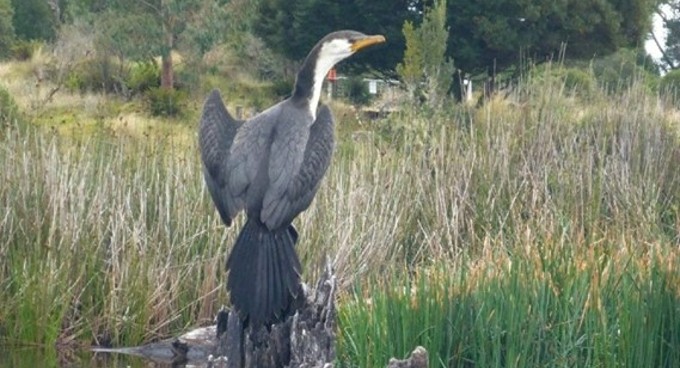Decommissioning Waratah Dam

Client: TasWater
Location: Tasmania / Australia
Date: March 2018 - July 2023
Providing holistic, multidisciplinary support to enable the safe and sustainable decommissioning of a Tasmanian dam
Background
The Waratah Dam was located on Tasmania’s Waratah River, approximately 1.5 km upstream of the Waratah township. TasWater proposed the dam be decommissioned as it was not needed for the supply of freshwater into the town and did not meet safety requirements.
Entura was engaged to support the application for decommissioning the dam, which included undertaking environmental and heritage impact assessments, sediment and erosion control planning, engineering design, rehabilitation planning, and a dam safety emergency plan.
Solution
Our multidisciplinary team undertook all the required studies and prepared a comprehensive and holistic decommissioning design report for the decommissioning permit application.
Decommissioning would involve removing the dam wall, diverting water in the dam while excavating the wall, and rehabilitating the dam site and newly exposed upstream river sections, including lining the river channel where required with rock to prevent erosion and sedimentation.
One of the key studies required as part of the dam decommissioning process was the environmental impact assessment (EIA), identifying the potential impacts of decommissioning the dam on the existing natural and cultural heritage values. To assess these values, we began by reviewing existing information to identify previously recorded flora, fauna and habitat values, as well as Aboriginal and historical heritage values associated with the dam.
We then undertook field surveys including a fish survey using fyke nets to identify the species of fish that occur within the impoundment area, electrofishing of the lake margins and shallow areas to survey the fish that use these habitats, and identification of any areas of the impoundment zone that might pose a risk of fish stranding.
We also conducted a freshwater crayfish survey using opera nets to identify which freshwater crayfish species occur in the dam and to indicate their abundance, and assessed other aquatic vertebrate species (e.g. platypus, frogs) and bird species that use the impoundment.
Field surveys were carried out to verify the potential Aboriginal and historical cultural heritage values identified in the desktop assessment.
In addition to the environmental studies, our specialists also prepared a soil erosion and sediment control plan to assist with developing a sustainable removal plan.
Services provided
- Environmental Impact Assessment
- Field surveys
- Community consultation
- Flora and fauna assessments
- Hydrographic surveys
- Soil erosion and sediment control plan
- Engineering design
- Rehabilitation planning
- Dam safety emergency planning
- Construction supervision
Outcome
Our flora and fauna assessment found that no threatened flora and fauna species listed under the Threatened Species Protection Act 1995 (TSP Act) or Environment Protection Biodiversity Conservation Act 1999 (EPBC Act) (Cth) would be affected by decommissioning the dam. The assessment found that decommissioning the dam would not adversely affect native non-threatened aquatic and wetland fauna species recorded at the dam, because there would still be suitable habitat for them in the re-established Waratah River and associated floodplain sedgeland habitat.
The freshwater aquatic sedgeland and rushland wetland community that occurs around standing water bodies is listed as a threatened vegetation community under the Nature Conservation Act 2002 (Tas). This vegetation community was considered unlikely to be significantly affected by decommissioning the dam, because, although some of the community would be lost, it would re-establish along the margins of the re-created Waratah River.
Overall, the assessment concluded that the decommissioning of the Waratah Dam was unlikely to have a significant impact on the flora and fauna species and vegetation communities that occur in the dam and on the riparian margin of the dam.
The Aboriginal heritage survey did not locate any Aboriginal relics during the survey of the dam and adjacent area. The potential for relics to be present within the study area and therefore impacted by the proposed dam decommissioning was considered very low.
The historical heritage assessment assessed the Waratah Dam as having medium local significance and concluded that the decommissioning of the dam would not have a major impact on historical heritage values.
These studies provided crucial expert evidence to ensure a sustainable decommissioning process and reassure community and stakeholders.
Entura carefully planned the staging of the works to minimise the risk of erosion of material and release of sediment to the environment. The existing outlet was used to first lower the reservoir and then bypass the flows in the river, while the left-hand side of the embankment was removed and a rock-lined channel with gravel check dams was constructed to take the flow. The outlet works were then decommissioned and removed. The remaining embankment was removed and landscaped to a stable form.
Once works began on site, our team provided construction supervision to ensure the works were completed in accordance with the decommissioning permit, minimising risk to communities, environment, heritage and reputation.





